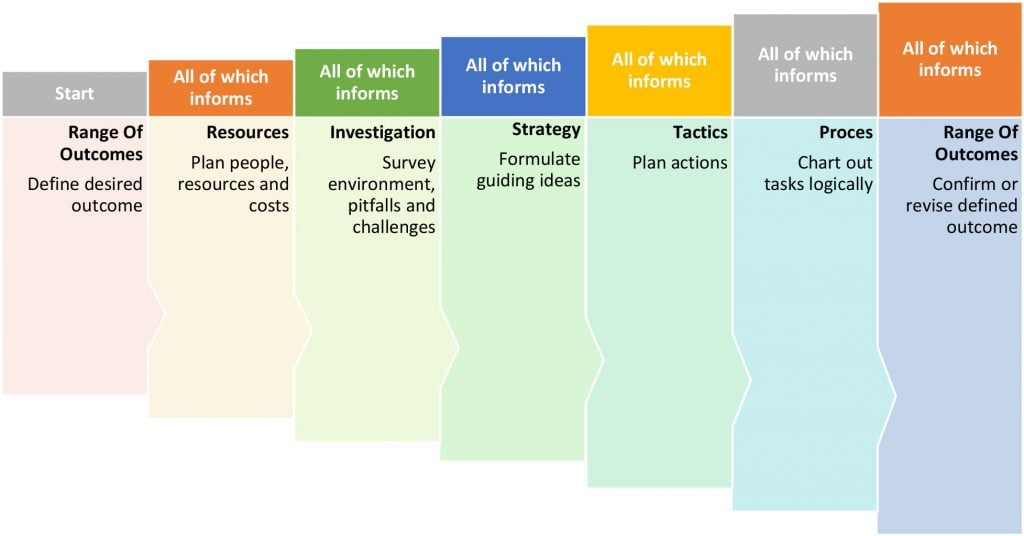Or, “You Can Jump In With Both Feet and Wing It, or You Can Create A Plan”
Let’s assume that everyone is on board with the idea that lawyers need a plan. Some lawyers go about this intuitively and when challenged they’ll say “sure I have a plan, it’s in my head.” Sometimes that’s true. Sometimes the “plan” is to wing it and see what breaks.
If we can agree that having a plan is essential, isn’t it better to have one which has a structure, which addresses all essentials, which the client has seen and approved, and which is in a document for the entire team to access?
The issue isn’t whether to plan, but how to plan. If you are part of a team or on your own, and you have responsibility to create the plan for an assignment, where do you start? The instinctive answer is “I’ll read whatever the client has sent me and do some legal research, that’s my plan.”
Lean Adviser has a better way. Once you’ve seen the Lean Adviser method and tools, you’ll get how easy it is to pick up and implement, you’ll see that it’s better for the assignment, better for the client, and safer for the firm.
In the Lean Adviser universe, planning has separate components, with a focus on agreeing to an acceptable range of outcomes with the client. This work — and this conversation — isn’t just about goals. It also covers resources, an initial investigation piece, how to develop a strategy, what tactics to deploy, and how to build a clear process plan.
You can drop into Lean Adviser for short lessons and tools on any of these key pieces. Or you can jump in feet first, without a plan, wing it and see what breaks.
Here’s our drop-down of the separate components of planning you’ll find in Lean Adviser:
- Agreed Range of Outcomes, first impression ‘The Blunt ARO’
- Initial Investigation
- Resources – Creating Budgets, Assigning Assets
- Strategy
- Tactics
- Process Charting
- Agreed Range of Outcomes, agreed goals ‘The Sharp ARO’
Done right, planning for a legal assignment is cumulative in nature, each step adds to the mix and informs the next one as illustrated below:

RELATED TOOLS:













































 Copyright © 2024 ALM Global, LLC. All Rights Reserved.
Copyright © 2024 ALM Global, LLC. All Rights Reserved.